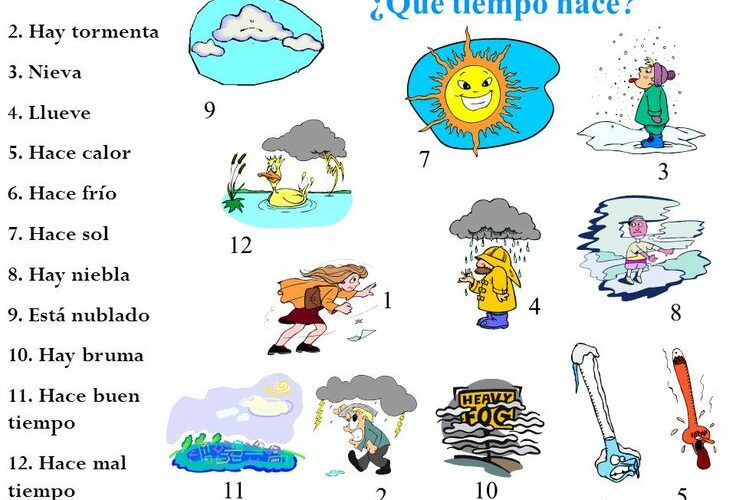subsequently How do you respond to Que dia es ma
Is it El tiempo or La tiempo? I checked the dictionary here, and the translation given from English for “weather” is “el tiempo”, and climate was translated la clima, although it then said clima was masculine. Tiempo is given as both time and weather under different meanings in the same entry.
as well What is Hace Frio Spanish? Literally it means it made cold, but it is translated as it’s cold. d. Literally it means it makes cold, but it is translated as it’s cold.
What is hace buen?
Into English (US)
it’s nice weather.
What is La Mano plural? The plural of la mano (meaning hand) is le mani.
identically Is Pupitre El or LA? It’s a masculine word (“un“/“el” pupitre, “unos”/”los pupitres”). At school, a student might use a “carpeta”, which is also translated as desk. In an office or at home, a desk is commonly called “escritorio”. You guessed it again: el pupitre means exactly that in Spanish!
What is the difference between por and para in Spanish? Por is “by” someone, para is “for” someone. Por refers to a person who did something – in plain English, something was done by someone.
What does Hace calor?
It is hot (referring to the weather)…….Hace calor (literally: It makes heat)
Does Frio have an accent? It has an accent mark because it has more than one syllable: /son-rió/, the prosodic accent goes on the last syllable: /son-‘rio/ and it ends on a vowel.
Are the months in Spanish masculine or feminine?
Months of the year in Spanish are always masculine.
What is hace mucho viento? corre / hace mucho viento — it is very windy.
What is the English of Boca?
History and Etymology for boca
Spanish, literally, mouth, from Latin bucca cheek, mouth.
What is mango plural?
noun. man·go | ˈmaŋ-(ˌ)gō plural mangoes also mangos.
What is El Dia plural? plural of día. días [m/pl]
Is it LA or El Lapiz? Lápiz is gendered masculine in Spansh, so the definite article is el and the indefinite article is un.
Is it El or La Pie?
pie noun, masculine (plural: pies m)
El tobillo es la articulación que une la pierna con el pie. The ankle is the joint that connects the leg to the foot.
How do you say El Borrador?
- boh. rrah. dohr.
- bo. ra. ðoɾ
- bo. rra. dor.
Does Para mean stop in Spanish?
The form of Para you are referring to is the verb parar which means ‘to stop’. When commanding something or someone to stop! You say tú para or ud pare.
What does the Spanish word De mean? The preposition de is translated as “of,” “from,” or “about,” but de also can mean “by,” “in,” or other prepositions in some cases. Del is simply the contraction of de and the definite article el (not él), so we use del in place of de el.
What is the difference between Pero and Sino in Spanish?
That means they are both used to connect words, phrases or clauses in a sentence. … Here’s a hint: In the first sentence you could replace ‘but’ with ‘except’. In the second, you could replace ‘but’ with ‘but rather’ or ‘but instead’. Sino and pero can be the translation of ‘but’, however sino has a more nuanced use.
Do you say shut up in Spanish? Say “shut up.” “Cállate” is the literal translation of “shut up” in Spanish, and there are a few ways to say it. The word is pronounced “ka-ya-tay.” Here’s what you can say: “¡Cállate!” (“Shut up!”)
What does Mamacita mean?
The literal translation of mamacita is “little mother” but the figurative and more accurate translation is “hot momma.” The moniker is never really used to describe an actual mother, a genuine mamá or mamita. Instead, the word is inextricably linked to a man’s perception of a woman as an object of sexual desire.
What is muy caliente? adjective. having a high temperature. hot → caliente; muy caliente.
